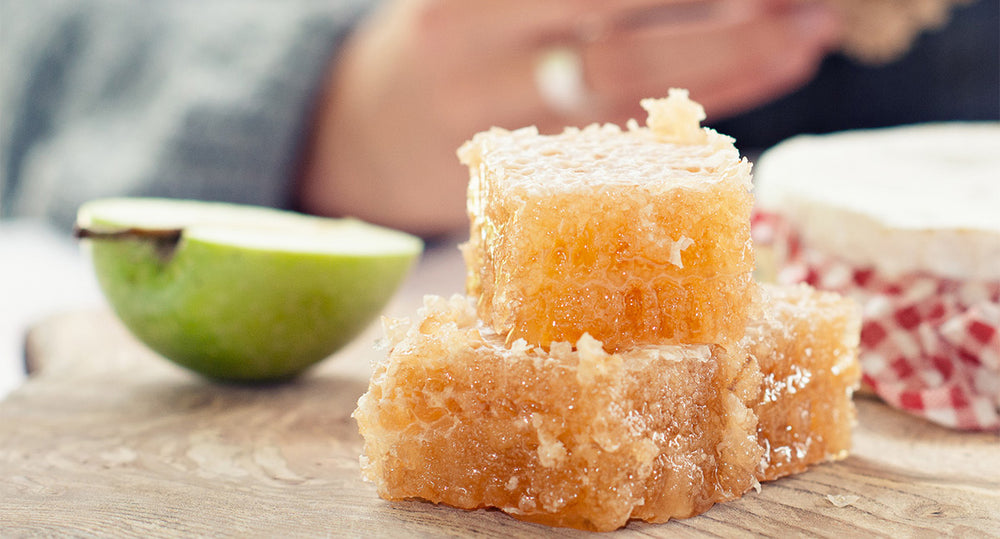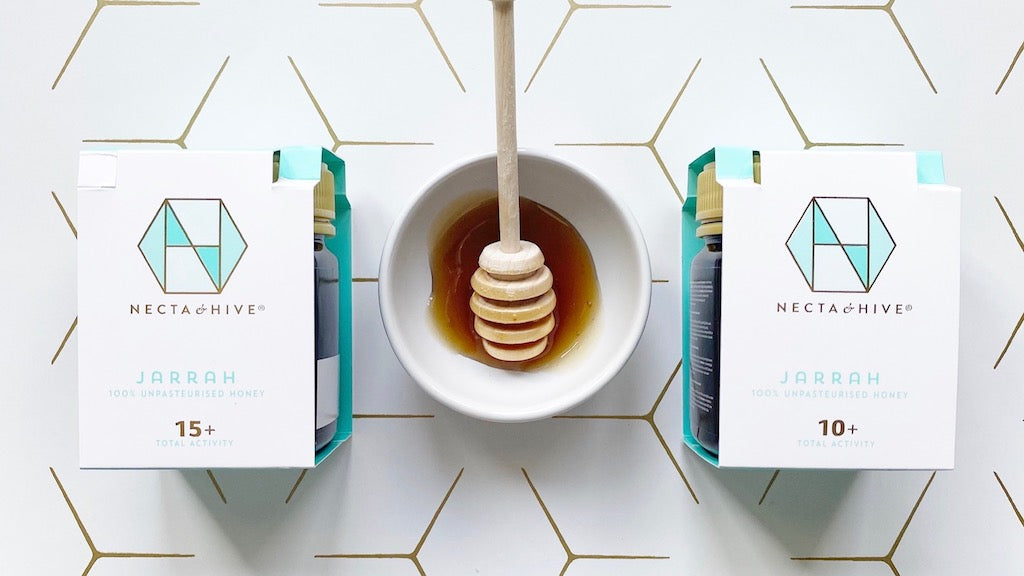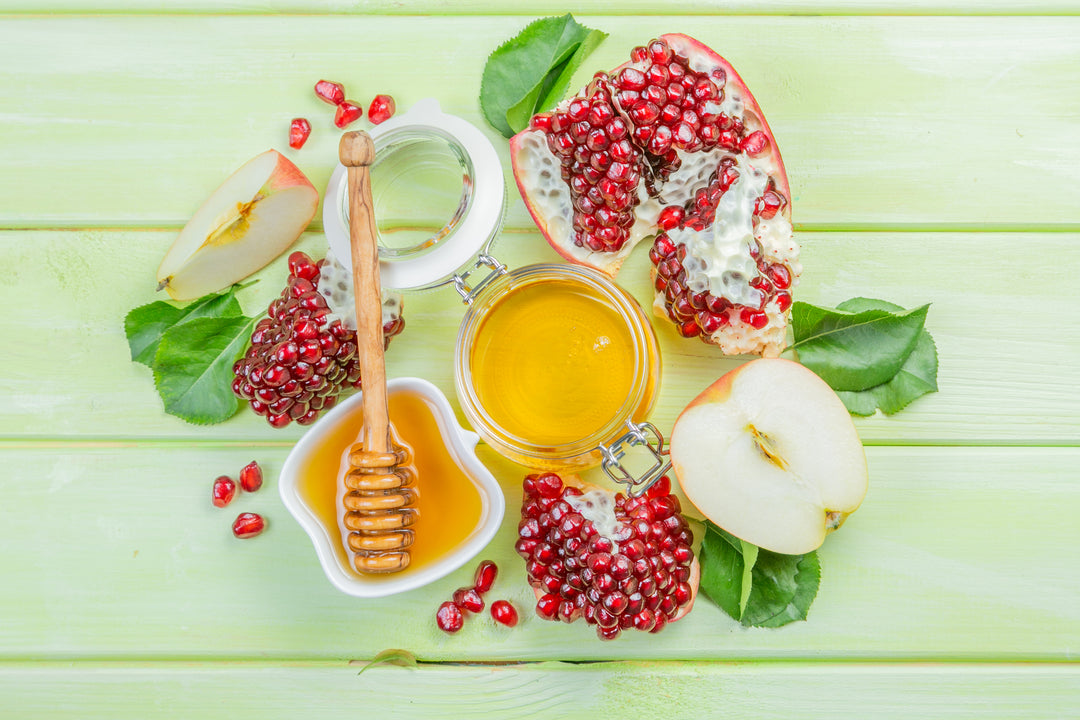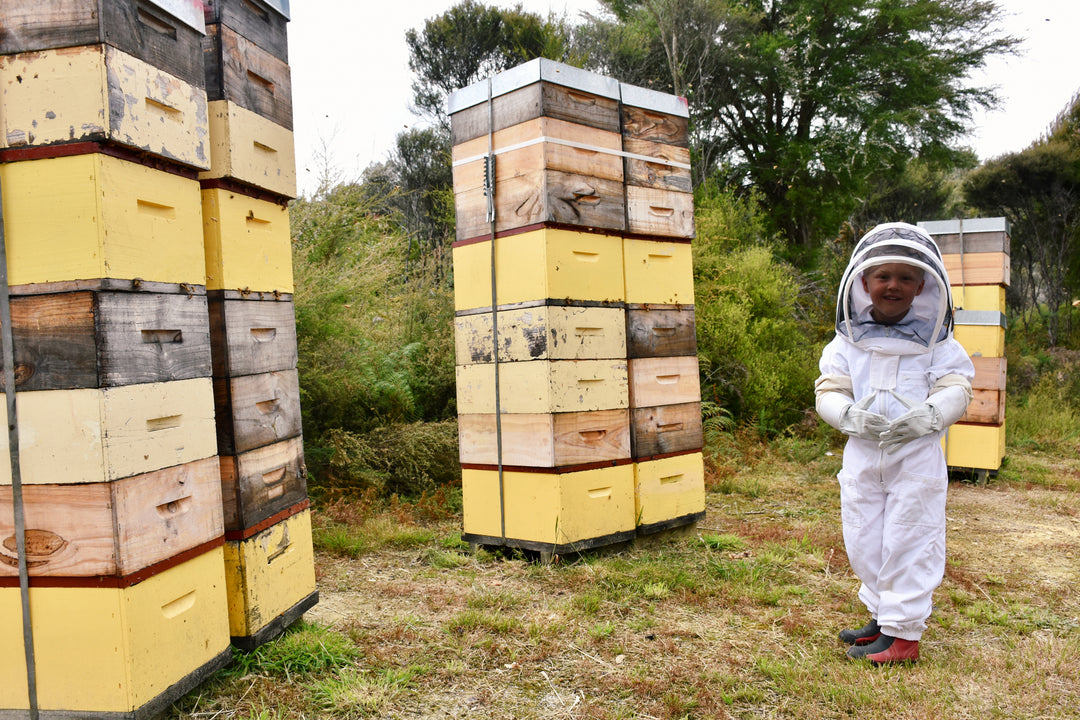When you’re looking to buy a high quality, healing honey, you’ll probably notice lots of abbreviations and numbers on the labels of pots of honey. Depending on the honey, you’ll probably see ‘MGO’, ‘UMF’ and ‘TA’ preceded by, or following, a number.
These letters and numbers are necessary to let you, the consumer, know the relative microbial strength of the honey you’re buying. But we know it can all be confusing and a bit overwhelming, so here we’re going to explain the difference between MGO, UMF and TA, what they all mean, and what you should look out for.
MGO and UMF in Manuka Honey
Manuka honey is a monofloral active honey with antibacterial properties from New Zealand. You’ll find it with either an MGO or UMF numbered rating, the higher the rating, the more antibacterial the honey.
MGO stands for methylglyoxal, a substance that is present in genuine New Zealand Manuka honey. The reason we say ‘genuine’ is because methylglyoxal is naturally present in Manuka honey, but it can be added to counterfeit Manuka and still register as compound present in the honey.
Methylglyoxal gives Manuka honey it’s antibacterial properties, but that’s not all that’s at play in grading Manuka honey. The age of the honey can be measured, and is recorded as a measurement of a compound called DHA, or dihydroxyacetone. Plus, another compound can be tested for in a batch of Manuka honey, called leptosperin, which cannot be falsified or added in any way.
Together, these three measurements give Manuka honey it’s UMF, or Unique Manuka Factor rating. As with MGO, the higher the UMF number, the higher the antibacterial rating of the honey. So arguably, UMF is a better indicator to use when buying Manuka honey.
The TA Rating of Jarrah and Red Gum Honeys
All of that said, superior to Manuka honey, are Jarrah and Red Gum honeys. Jarrah and Red Gum honeys are monofloral honeys that are antimicrobial and hail from Western Australia. But there’s a big difference. Manuka honey is antibacterial, meaning that it can kill or inhibit the growth of pathogenic bacteria. Jarrah and Red Gum honeys are antimicrobial, meaning that they can kill or inhibit the growth of pathogenic bacteria as well as viruses and fungi.
Their antimicrobial power is rated according to their TA, or Total Activity number. Total Activity is a sliding scale of effectiveness against killing pathogenic microorganisms. The higher the TA rating, the higher the antimicrobial nature of the honey.
When bees produce Jarrah or Red Gum honey after foraging on the Jarrah or Red Gum trees (both members of the eucalyptus family of trees) native to Western Australia, they add an enzyme called glucose oxidase. The glucose oxidase then reacts with the glucose and the oxygen in the water that are both naturally present in the honey to produce hydrogen peroxide.
Hydrogen peroxide is a potent antimicrobial agent that can effectively soothe sore throats and coughs and heal wounds. In the levels present in honey, it’s gentle on human tissue and the gut and gives Jarrah and Red Gum honeys a unique taste, unlike the medicinal taste of Manuka honey, which is considered a non-peroxide honey.
Manuka vs Jarrah and Marri Honey
Jarrah and Marri honeys aren’t as well-known as Manuka honey, but with our help, Jarrah and Marri honeys will take the UK by storm. And we’re not alone in knowing that Jarrah and Marri Wild Honeycomb are superior to Manuka in the antimicrobial, healing power stakes.
Jarrah and Marri honeys are rarer, have a limited availability and are costlier, but worth it. They’re considered to have 50% more antimicrobial prowess than Manuka and are available right here at Necta & Hive. Necta & Hive Jarrah and Marri honeys are amongst the highest rated TA honeys on the market. Enjoy!






